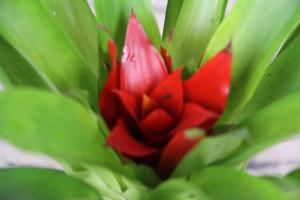How to Plant an Olive Tree in South Africa
Olive trees are a great addition to any garden, producing beautiful foliage and delicious fruit. If you live in South Africa and are interested in planting an olive tree, follow these steps to ensure a successful harvest.
Step 1: Choose the Variety of Olive Tree
There are many different varieties of olive trees, each with their own unique characteristics. When choosing an olive tree to plant in South Africa, it is important to choose a variety that is suited to the climate and soil conditions in your area. Some popular olive tree varieties in South Africa include Mission, Frantoio, and Manzanillo.
Step 2: Prepare the Soil
The soil in South Africa can vary greatly depending on the region. Before planting your olive tree, it is important to prepare the soil by removing any rocks or debris, and adding any necessary amendments such as compost or fertilizer. Olive trees prefer well-draining soil with a pH between 6.0 and 8.5.
Step 3: Plant the Olive Tree
When planting an olive tree in South Africa, it is best to plant it in the winter months when the temperatures are cooler. Dig a hole about twice the size of the root ball and place the olive tree in the center. Make sure the tree is straight and that the roots are not too deep or too shallow. Backfill the hole with soil and water the tree thoroughly.
Step 4: Prune the Olive Tree
Pruning is an important part of growing an olive tree in South Africa. Pruning helps to promote healthy growth and increased fruit production. Prune your olive tree during the winter months when it is dormant. Remove any dead or damaged branches, and selectively thin out the interior of the tree to allow for better light penetration and air flow.
Step 5: Water and Fertilize the Olive Tree
Olive trees in South Africa require regular watering, especially during the summer months. Water your olive tree deeply once a week during the growing season. Avoid overwatering as this can lead to root rot. It is also important to fertilize your olive tree once a year with a balanced fertilizer, such as a 10-10-10 blend.
Step 6: Harvesting the Olives
Most olive trees in South Africa begin to bear fruit within three to four years after planting. The olive harvesting season in South Africa typically runs from March to June, depending on the variety of olive tree. Olives are harvested by hand or by using specialized equipment, and then processed into oil or table olives.
By following these steps, you can successfully plant and grow an olive tree in South Africa. With proper care and maintenance, your olive tree can provide years of beauty and delicious fruit.

 how many times do yo...
how many times do yo... how many planted tre...
how many planted tre... how many pine trees ...
how many pine trees ... how many pecan trees...
how many pecan trees... how many plants comp...
how many plants comp... how many plants can ...
how many plants can ... how many plants and ...
how many plants and ... how many pepper plan...
how many pepper plan...































